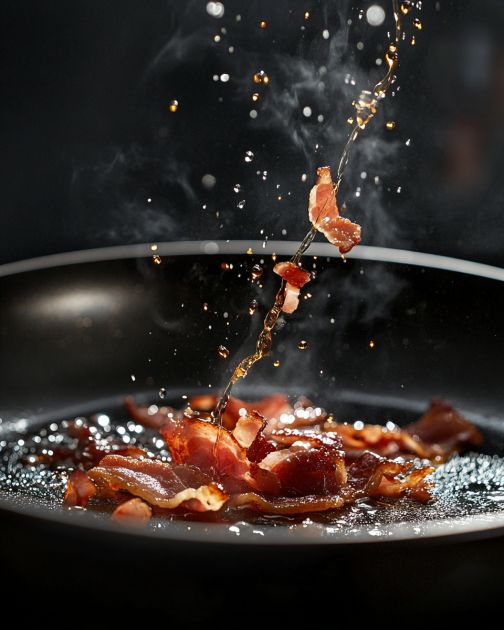While frying bacon with my aunt, I was surprised to see her drizzle a bit of vinegar on it halfway through cooking. Why would you do that?

The science behind using vinegar on bacon lies in its acidic nature. When vinegar is added to bacon during cooking, it interacts with the proteins and fats. The acid helps break down some of the proteins, making the bacon more tender. Additionally, it can aid in rendering the fat more effectively, leading to a crisper texture. The vinegar’s acidity also helps balance the bacon’s inherent saltiness, creating a more harmonious flavor profile.
Flavor Enhancement: The Taste Benefits of Vinegar
Vinegar’s ability to enhance flavor is well-documented. When used on bacon, it adds a layer of complexity to the taste. The acidity provides a contrast to the savory and salty notes, making each bite more dynamic. This subtle tang can elevate the overall flavor, preventing it from becoming overwhelmingly rich. The result is a more balanced and enjoyable eating experience.
Texture Transformation: Achieving the Perfect Crisp
One of the most sought-after qualities in cooked bacon is its crispiness. Vinegar can play a crucial role in achieving this texture. By helping to render the fat more thoroughly, vinegar allows the bacon to crisp up more evenly. The acid also aids in breaking down proteins, which can contribute to a lighter, crunchier texture. This technique can be particularly useful for those who prefer their bacon extra crispy.
Health Considerations: Vinegar’s Nutritional Impact
Vinegar is low in calories and contains no fat, making it a healthy addition to many dishes. Its acetic acid content has been linked to various health benefits, including improved digestion and blood sugar control. When used in moderation, vinegar can enhance the nutritional profile of a dish without adding unwanted calories or fats. However, it’s important to balance its use to avoid overpowering the dish.
Culinary Variations: Other Ingredients to Experiment With
While vinegar is a fantastic addition to bacon, there are other ingredients that can be experimented with for different flavor profiles. Maple syrup or honey can add a sweet contrast, while spices like black pepper or smoked paprika can introduce a smoky depth. For those who enjoy a bit of heat, a dash of hot sauce or chili flakes can provide a spicy kick. Each of these ingredients can be used in conjunction with vinegar to create a unique and personalized bacon experience.
Conclusion: Embracing Culinary Curiosity
Cooking is as much about experimentation as it is about tradition. My aunt’s vinegar trick is a perfect example of how a simple ingredient can transform a dish. By embracing culinary curiosity, we open ourselves to new flavors and textures that can elevate our cooking. So next time you’re frying bacon, consider reaching for that bottle of vinegar and discover the delightful surprise it brings.
Leave a comment
Leave a comment










